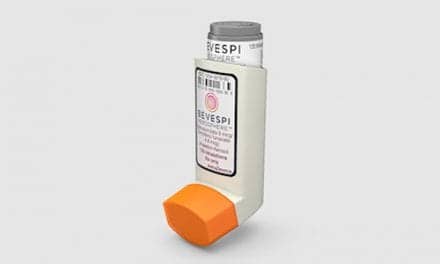
With the increased demand for oxygen products by the aging Baby Boomer population and changes to reimbursement, this month’s Market Analysis Q&A asked executives from three oxygen product manufacturers to look ahead at the industry and technology trends for oxygen devices. They were invited to share their thoughts about market demand in the coming decade and the impact of reimbursement cuts.
Our respondents include George Harris, CEO of Inovo Inc/CHAD Therapeutics, Naples, Fla; Joseph L. Priest, president and COO of AirSep Corp, Buffalo, NY; and Ron F. Richard, vice president and general manager of Chart SeQual Technologies Inc, San Diego.
RT: What are the latest technological trends right now in your segment of oxygen therapy?
Harris: There is a growing awareness of the desire for standardizing the definition of terms such as liter flow equivalents, ie, should a setting of 2 on a conserver mean the same for all conservers. Clinicians are also becoming more aware of the importance of checking patients’ O2 saturation levels at home. However, this is becoming more challenging in the face of further reimbursement cutbacks.
Priest: I think the primary technological advance has come from portable oxygen concentrators, wearable oxygen equipment, and battery-powered oxygen equipment. For me, that is both the opportunity and the future growth prospect for home oxygen for manufacturers right now.
Richard: With the recent acquisition [of SeQual] by Chart, and the company’s primary focus on liquid oxygen, we are now combining portable and liquid technologies and concepts. For the future, [the focus] will be looking at the patient’s needs specifically in terms of their time of ambulation, the prescription in terms of liter flow, and then better matching up options and solutions that will combine the application of liquid and portable concentrators. And obviously we are going to try to reduce the size [of concentrators] to make it easier for the patient to be compliant with therapy. We also want to make them more ergonomic and user friendly in a number of different ways. All medical equipment is getting to be more consumer-oriented, particularly in sleep where one sees CPAP machines now with MP3 players; however, I do not see us integrating that type of technology into an oxygen device. Rather, I see us integrating monitoring, tracking, and data compliance technologies that can potentially give clinicians information to reduce recidivism and to be more proactive in their treatment protocols.
RT: What new technology trends do you see emerging in oxygen products in the next 5 years?

George Harris
Harris: There will continue to be development in areas of improved oxygen delivery to properly saturate and monitor the patient. In addition, providers will continue to look for ways to reduce costs with non-delivery models such as transfill systems.
Priest: I think that there has already been a quantum leap in the technology. Many times that is the way technology advances—there is a huge jump in technology. [That leap] really occurred with the 2002 introduction of AirSep’s LifeStyle, which was the first less-than-10-pound battery-operated concentrator that could be worn. I think that was sort of a transformation that started a new opportunity for people who make PSA oxygen equipment.
So, I would say over the course of the next 5 to 10 years, we will see that technology becoming more sophisticated, improving, etc, but I do not foresee a quantum leap like that within the next 5 years. I see incremental changes, enhancements—like improving patient interfaces.
The initial introduction of oxygen concentrators to this market occurred in the 70s, but it really was not until the mid- to late 80s that concentrators transformed from one of many technologies sharing the market to [a position where] 90% (and today it is probably nearly 98%) of the in-home oxygen is delivered by an oxygen concentrator. I think we are going to see a very similar type of transformation in the portable oxygen concentrator market.
Richard: Liquid is obviously something that patients have enjoyed and would like to use for years. With the cost of delivery, however, it has been a bit difficult. Where we will probably see technological advances is in continuing to create home filling-type systems utilizing liquid and using portable combination-type devices with stationary units. And again, [there will be advances with] telemedicine being integrated into that so one can have a complete disease management program that is more vertically integrated with physician oversight in combination with the services and support of home care providers.
RT: How will an aging Baby Boomer population that still wants to remain active affect the oxygen market and development of oxygen products in the coming decade?
Harris: All forecasts reflect a growing patient population requiring oxygen therapy over the next 10 years. COPD is the fourth leading cause of death and predicted to be the third leading cause by 2020. Projections are that the market will grow by 7% to 10% a year based on the aging Baby Boomer population coupled with their desire to lead a more active life.

Joseph L. Priest
Priest: What really sparked the initial growth with POCs (portable oxygen concentrators) [back in early 2000] was purchase for resale. And a lot of that purchase for resale frankly, I think, came from Baby Boomers buying for their parents, but certainly some people who needed oxygen bought it for themselves. But [it was during this time] that the Internet was ramping up as a source of information. So today there is a substantial number of end users who go online looking at oxygen equipment that a decade or a decade and a half ago never did. Back in the 90s, we never heard from home oxygen patients. If we got one call a month, that was a lot. Today we get multiple calls per day from patients because the access to information is so good.
So, I think the coming Baby Boomers have already had an impact on the market in that they sourced these out for family members or themselves. As Baby Boomers start to graduate into needing home oxygen, I think we will see a continued escalation in the desire for POCs. It is not only a win for the home care company and the ability to cut operating costs, but it is a huge advantage for the patient. It adds a degree of freedom that users did not get with condenser-based, where they had to get back home because they needed to fill the reservoir. Now, their ambulatory time is almost infinite. So long as one can get to a car, or an outlet, or whatever the case may be, the user can continue with travels or activities outside the home.
Richard: There are two things. One is they have a lot more discretionary income than prior generations and they are more demanding. They are also very lifestyle-oriented in terms of wanting to enjoy the remaining years of their life. So for patients on oxygen, we are seeing trends where they are using multiple different systems even though insurance may pay for only one system. They are paying out of pocket now for devices to go on vacation or to travel. Often we are seeing patients now who have two or three different types of oxygen systems that range from stationary, portable, liquid—across the whole gamut.
RT: CMS announced earlier this year that its competitive bidding program would cut reimbursement for oxygen supplies and equipment by an average of 29% in nine cities starting January 1, 2011. What effect will these cuts have on the market for oxygen products?
Harris: There is no doubt the cuts enacted by CMS over the past several years along with competitive bidding have created uncertainty in the industry. There will be further consolidation of providers, and there will continue to be downward pricing pressures on the manufacturers as providers look for more inexpensive options. But the overall market will continue to grow as the patient base grows.
Priest: Unfortunately, it is going to be limiting. Initially, I think the transformation is going to occur, as happens most of the time when there is a technology that works, with CMS gravitating toward the lowest cost solution—and that is an in-home concentrator. Where the limitation occurs is after the initial setup. I think there will be very little opportunity for patients to upgrade as new technologies become available or new offerings come out. We are getting ready to release a less-than-2-pound POC. A patient who today has a 5- or 10-pound POC suddenly sees this and says, “I would like to have that,” and they are at 24 months. There is no way a home care company can rationalize providing them with an upgraded piece of equipment. I think what one is going to find is that people are going to be relegated to what they get, whereas historically when there was an ongoing reimbursement, the home care companies could provide patients with upgraded pieces of equipment and new technology and justify it. I think providers are going to find a substantial restriction in patient selection and opportunities. And the final thing is, quite frankly, the home care companies are just not going to be able to provide the level of support after installation, support that historically they have been able to do.

Ron F. Richard
Richard: Well, it is actually probably going to force the changes we have seen coming now for the last 3 or 4 years—that is going to be adopting technologies that can control expenses. We keep hearing over and over again low-delivery or non-delivery. The technologies that fall under those areas are obviously things that patients will have to take more responsibility for and care for themselves—things like home-fill devices, portable oxygen concentrators, home liquefiers, things that can produce oxygen at home, and then allow patients to have a lifestyle that is conducive and convenient for them so they do not have to wait around for a delivery. The other option is people will be forced to pick up their own oxygen at a home care provider’s location versus getting deliveries. Maybe they will get one delivery a month, and then beyond that it is either pay for each delivery out of pocket, or come and pick it up themselves. As for the new health care legislation, the impact is largely unknown. Oxygen has been treated unfairly in the sense that it is a drug and they are coupling together dispensing devices [and medication], and regulating the dispensing device of a medication to a patient who is chronically ill. To put a cap on oxygen is … unfair to oxygen patients and it is unfair to home care providers. The cap should be lifted and as long as a patient needs oxygen, they should get it.
Alison Werner is associate editor for RT. For further information, contact [email protected].









